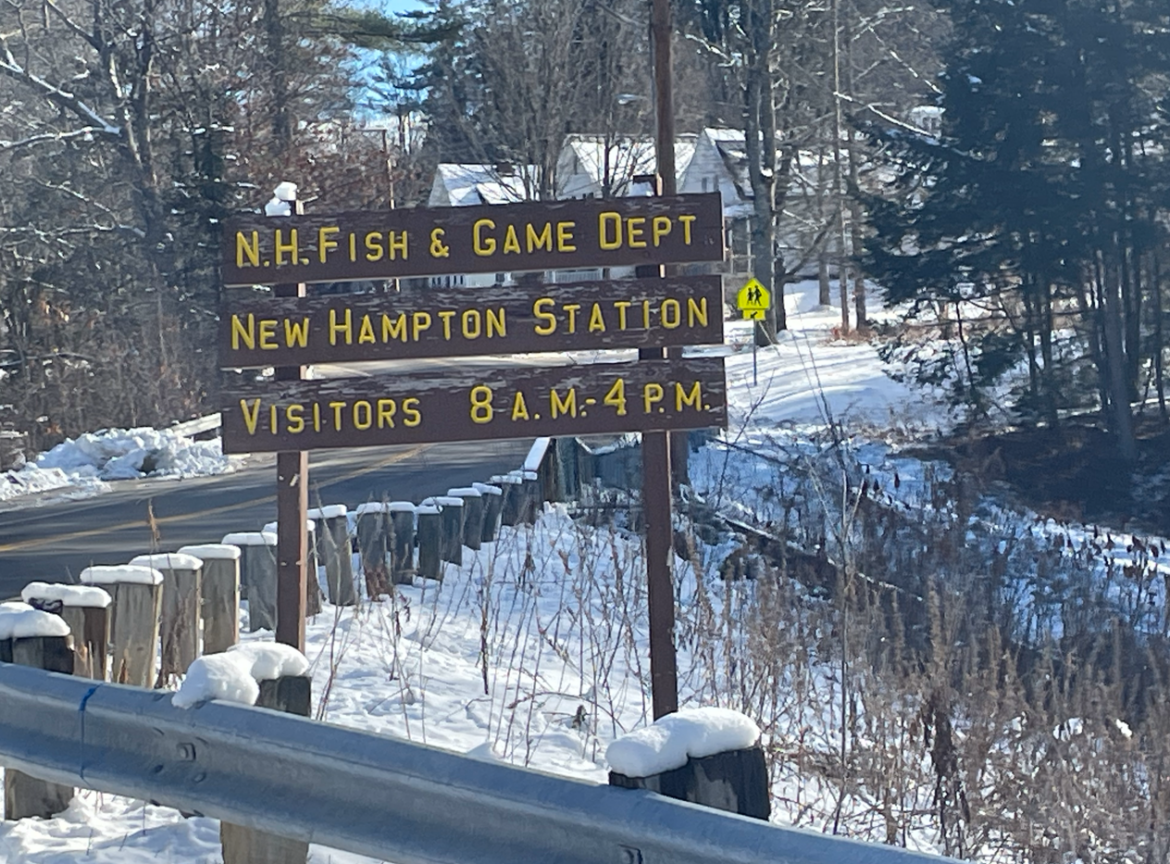By PAULA TRACY, InDepthNH.org
NEW HAMPTON – Forced by a lawsuit to clean up the fish waste flowing from its aging hatcheries into the open waters of the state, New Hampshire Fish and Game has started the improvement process with one hatchery in New Hampton.
Under a contract approved Nov. 29 by the state’s Executive Council, HDR Engineering Inc. will design a modernized hatchery off Main Street for $7.2 million, which is funded through federal COVID-19 relief funds. In all, construction will cost more than $50 million and be completed by the end of 2026.
Scott Mason, executive director of the department, said this is the first step in a comprehensive process for the six hatcheries, which responds to more stringent phosphorus emission regulations established by the federal Environmental Protection Agency.
The hatcheries are in Warren, Twin Mountain, New Durham, Milford and Berlin, in addition to New Hampton. The properties raise fish, three varieties of trout and salmon, to be released into the waters, primarily to benefit anglers.
When the fish defecate in the hatcheries, they add phosphorus into the water.
In 2018, the Conservation Law Foundation filed suit against the department related to its Powder Mill Hatchery in New Durham. A consent decree was reached leading to a reduction in fish raised as well as improvements to discharge quality and a maximum output of 12 parts per million of phosphorus.
HDR did a year-long assessment to evaluate conditions there and the other hatcheries and it found extensive needs for renovations throughout the state.
The stocking program has been around since the 1800s and the hatchery program has been here since the early 1900s.
In 2022, the EPA joined the CLF’s suit citing Clean Water Act violations at the state’s Powder Mill Fish Hatchery.
Like CLF’s lawsuit, the EPA alleged that the facility is degrading the health of the Merrymeeting River.
With its intervention, the EPA also filed a consent decree entered into by EPA, CLF, and the Fish & Game Department to settle the pending Clean Water Act lawsuit. It looks to see compliance by 2026.
In a statement in 2022, CLF’s Vice President Tom Irwin said “Significant pollution has plagued the Merrymeeting River and threatened Lake Winnipesaukee for many years…The EPA clearly saw the importance of this case and chose to intervene to protect the health of these waters. While there is still some process remaining, we’re on a path to resolving this case and ending this harmful pollution.”
The consent decree required New Hampshire Fish and Game to construct a wastewater treatment facility that dramatically reduces phosphorus pollution, to implement interim measures to reduce pollution before the wastewater treatment facility is built, and to assess and potentially address the impacts of sediments that have built up in the river over the years.
Powder Mill is New Hampshire’s largest hatchery, and it discharges wastewater into the Merrymeeting River, which flows downstream into Lake Winnipesaukee’s Alton Bay. The hatchery raises fish to be stocked in other New Hampshire waters to support recreational fishing. In the process, it discharges significant phosphorus pollution from fish and food waste, causing dangerous algae blooms and other water quality problems.
Most of the hatcheries are over 100 years old and produce over a million fish each year.
The department’s own website describes them “in desperate need of repair and upgrades, to make them more cost-effective, environmentally friendly, and energy efficient. Some of the issues to address are outdated electrical systems, broken equipment, rotting wood, asbestos, failing concrete, and wastewater treatment.”
The granite state’s granite has no calcium, an important mineral that impacts stream productivity.
Calcium promotes good water quality and is important for the growth of fish and the smaller fish and bugs they eat.
Overall granitic soils are low in essential nutrients, negatively impacting growth. This translates into waters with relatively poor capacity for growing bugs (bottom of the food chain) and smaller fish. The use of cultured fish in New Hampshire helps to alleviate the pressure on wild trout species and maintain desired angler satisfaction rates, the department’s website reads.
Species that ranked among the top five preferred by anglers include rainbow trout, stocked brook trout, and brown trout.
“The use of cultured trout and salmon is therefore essential to meet these preferences, as well as the desire for improved growth/size of trout fisheries in New Hampshire.”
To do this currently involves the operation of six hatcheries with an overall budget of about $4 million annually. An estimated 228,000 anglers fished 4.4 million, according to a national study by the U.S. Fish & Wildlife Service and a total expenditure by anglers of $209,000,000.
The first of the project is set for the New Hampton site along the Pemigewasset River.
A design for the facility will be the first step of the process.






